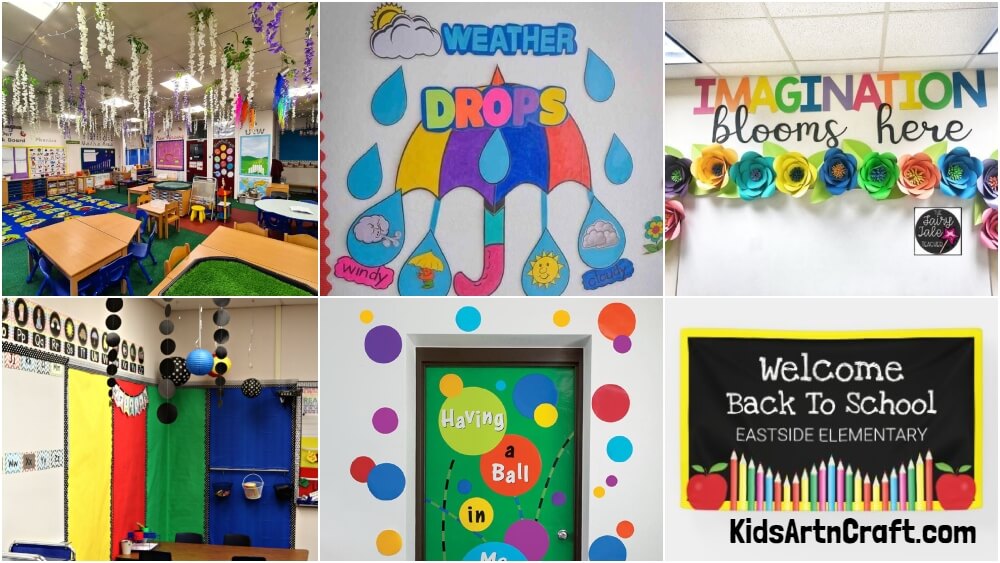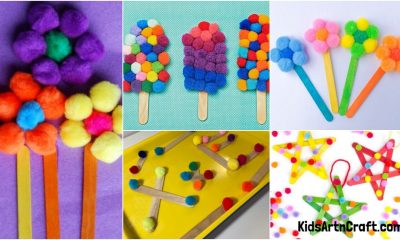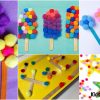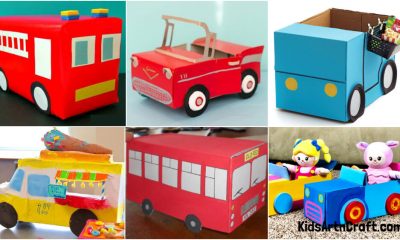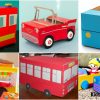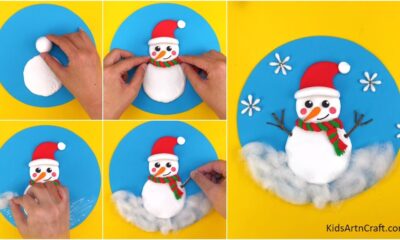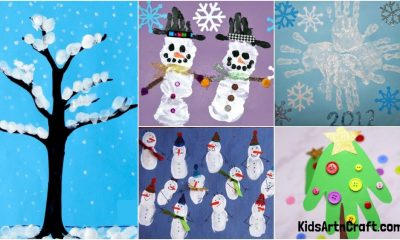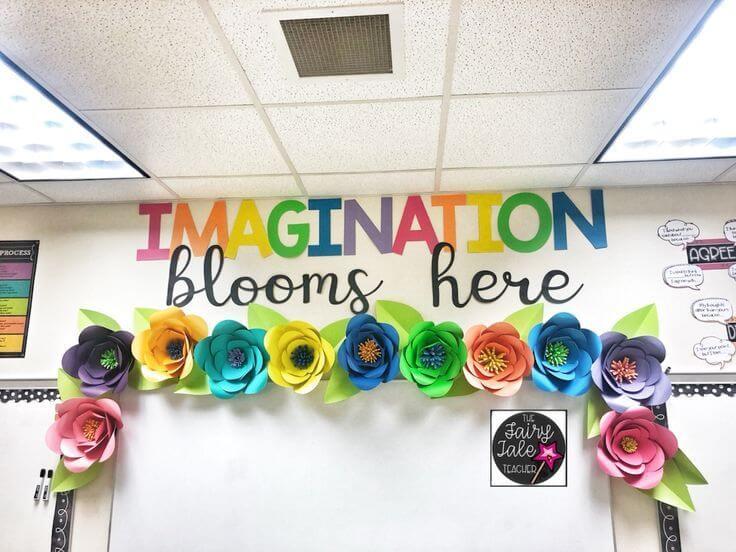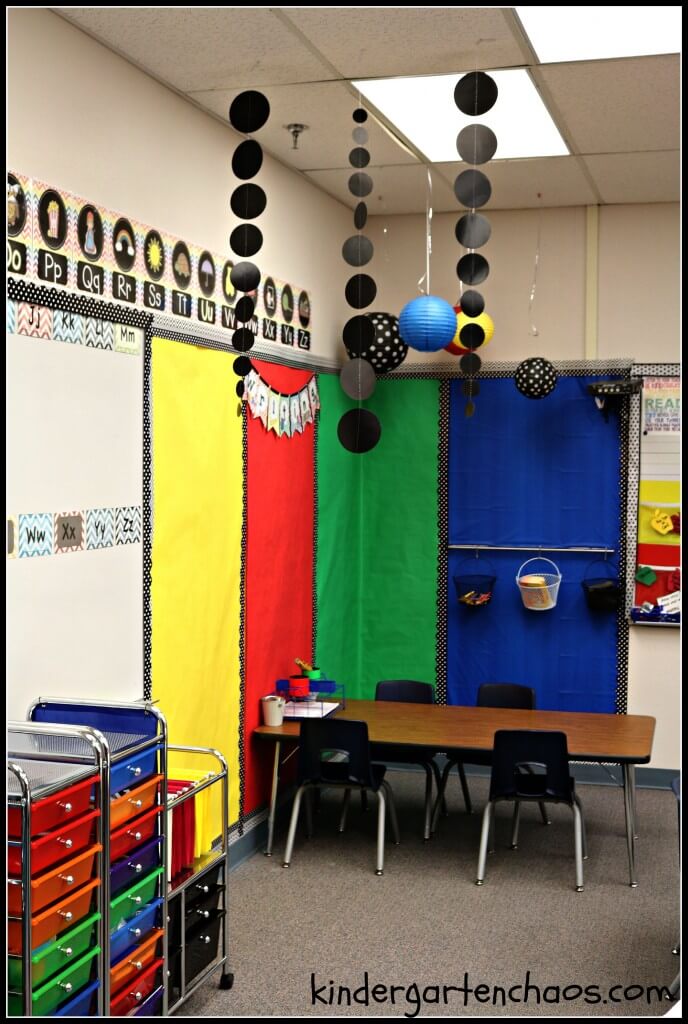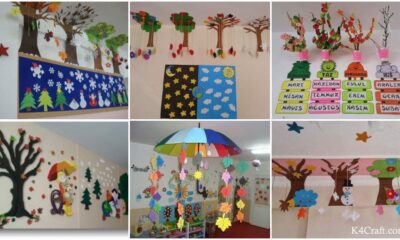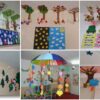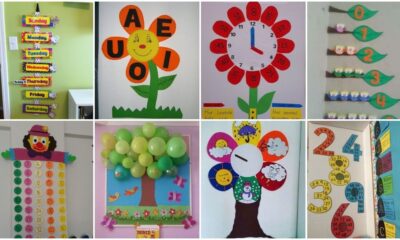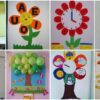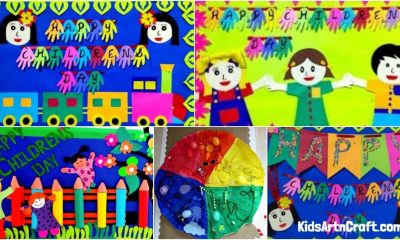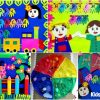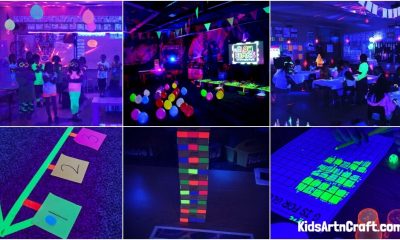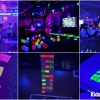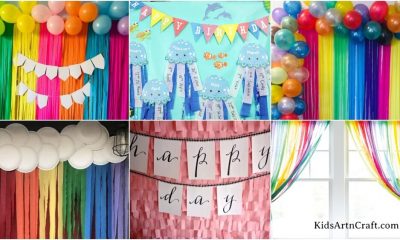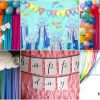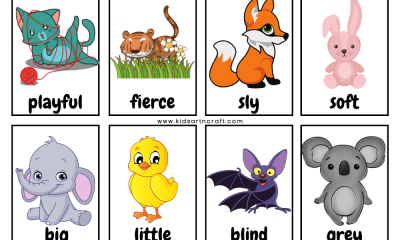Classroom
Classroom Decoration Ideas for Kindergarten

Looking to add a little bit of color and life to your classroom? Look no further! This article provides creative ways to decorate a kindergarten classroom, including DIY projects, art activities, and more! Read on to find the perfect classroom decoration ideas for your kindergarteners.
Welcome to this article exploring the wonderful world of classroom decoration ideas for kindergarten! Decorating the classroom is an exciting part of the school year for both teachers and students. It is a great way to create a positive learning environment that encourages creativity and helps foster student engagement. By incorporating various colors, shapes, and even animals into classroom decorations, teachers can create a warm and inviting atmosphere that will make learning fun and engaging. From wall decorations to bulletin boards, this article will provide several ideas to help you create a classroom that is both visually appealing and educational.
Amazing Classroom Decoration Ideas For Kindergarten
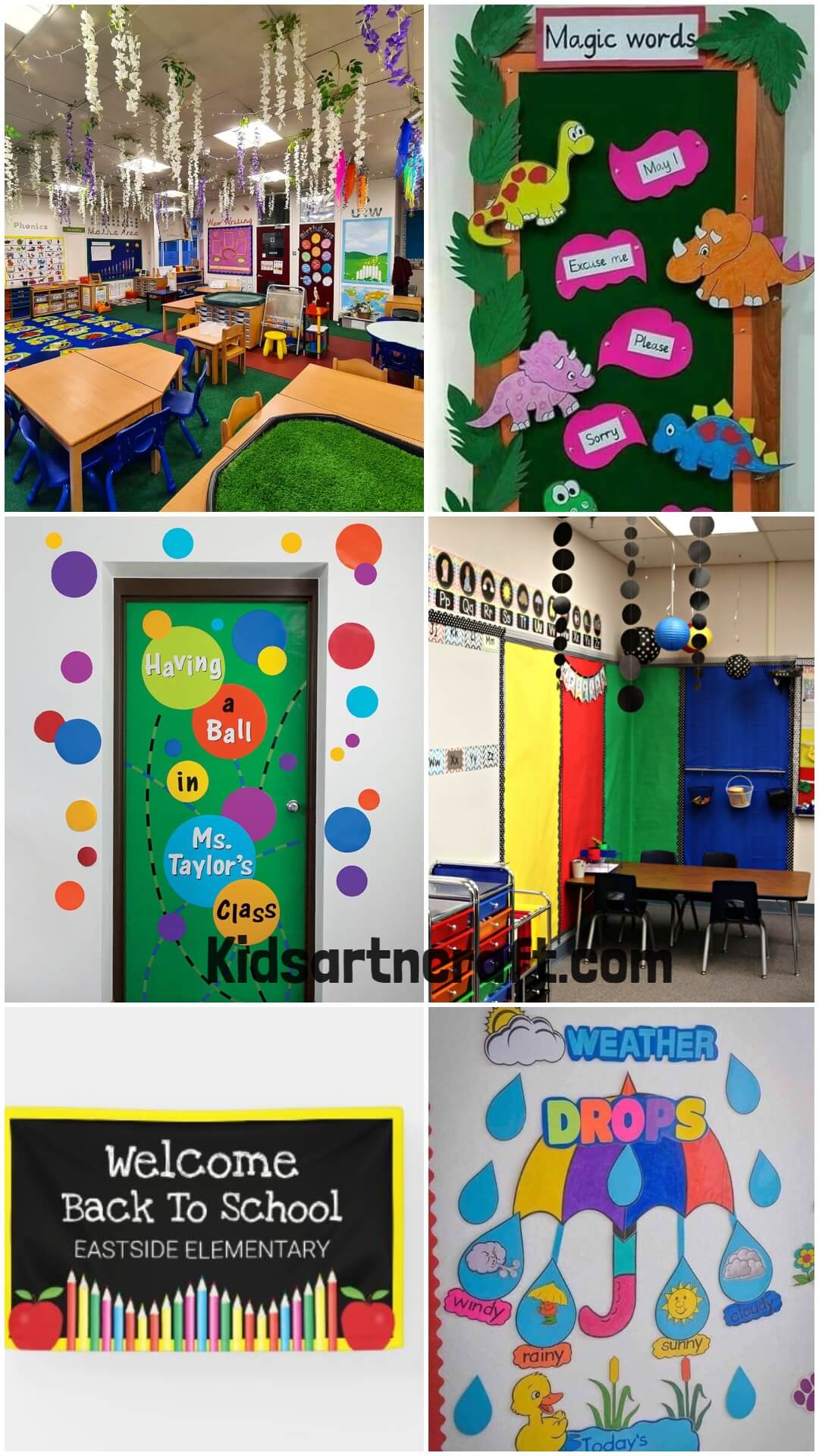 Read More: Math Teaching Activities For Preschoolers
Read More: Math Teaching Activities For Preschoolers
Easy & Simple Classroom Decoration Craft For Nursery Students
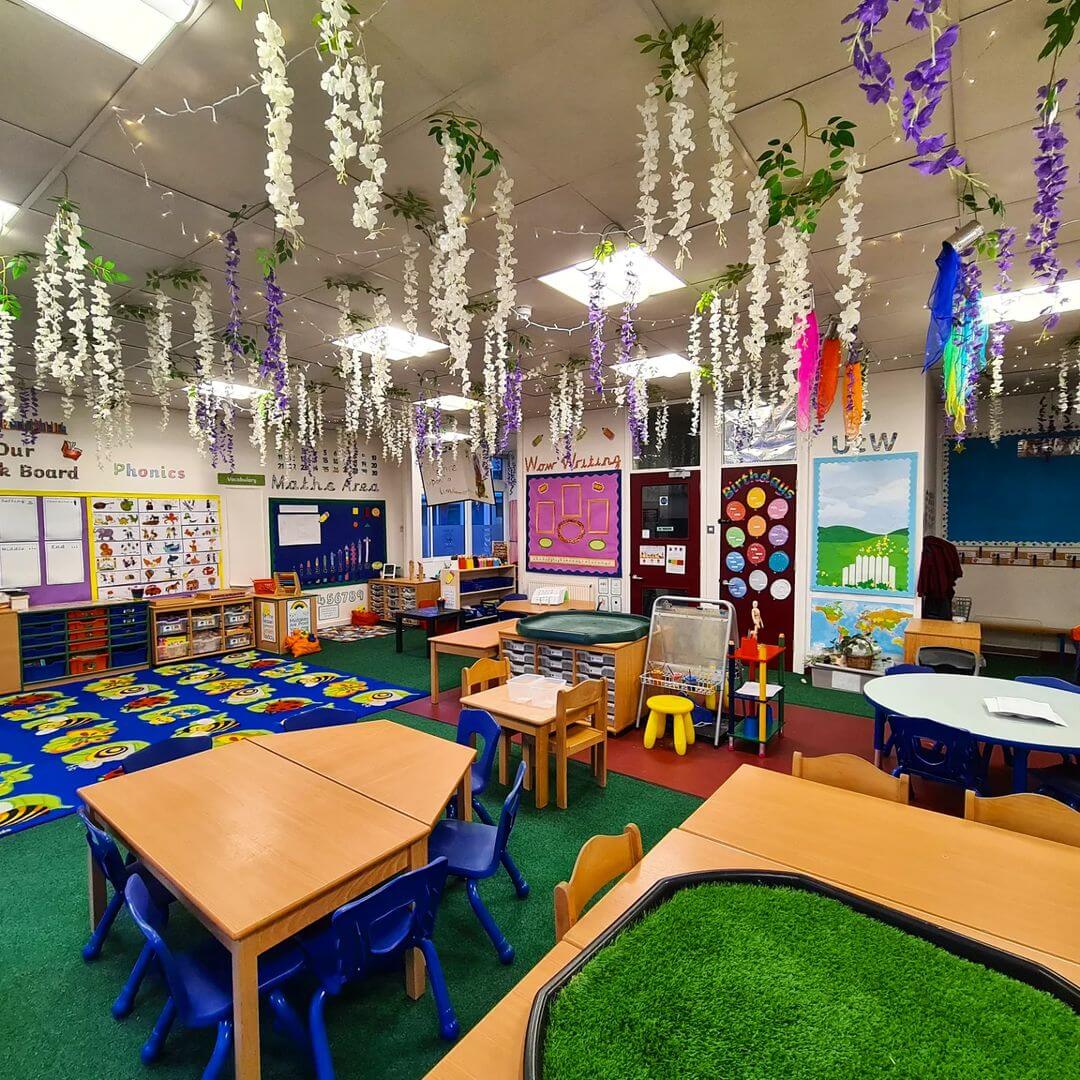
Image Source/Tutorial: Talk Decor
Spark the imagination of young students with this fairy tale decoration. This classroom has eye-catching and mesmerizing floral hanging on the ceiling which gives a festive vibe and look to the classroom. The spotlight on the flowers is giving them an extra special look to brighten up the room. It is creating a positive environment in the classroom which makes learning more enjoyable for kids. The colorful touch will help to inspire creative learning. Young kids are attracted to bright colors and lightning which help them to boost their imagination. Kids can feel at home as they will feel relaxed in this peaceful environment. How enchanting and magical it appears!
Amazing Weather Drop Decoration For Kids- Fun Activities
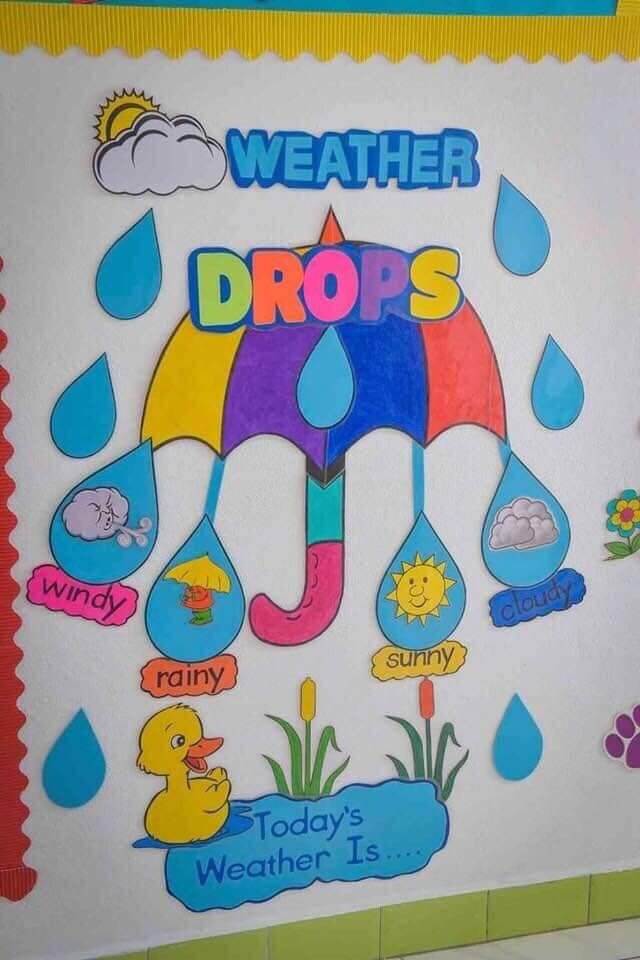
Image Source/Tutorial: Pinterest
Want to teach kids about the weather but in a creative way? Wait! We have one! This Weather Drop is a creative way to teach kids about weather by decorating a wall of the classroom colorfully and engagingly. You’ll need basic craft supplies like colorful papers, colors, scissors, and glue. It includes a colorful weather chart, as well as a variety of weather-related decorations. The decorations are perfect for making students aware of the current weather and learning about how it affects their daily lives. This decoration will add beauty to any space.
DIY Elementary School Decoration Using Paper Craft
Elementary school classrooms should look personalized and inviting to enhance the imagination power of kids. As kids gain more knowledge of language and life, their capacity for imaginative thought increases. So, kindergarten classrooms should be filled with stimulating elements to encourage children’s imaginations. A particular theme should be selected wisely that has vibrant colors and a meaningful message or thought. From paper cutouts to origami to paper flowers, there are endless possibilities for creative and fun decorations to brighten up their classroom and imagination.
Unique Classroom Soft Board & Bulletin Board Decoration Ideas
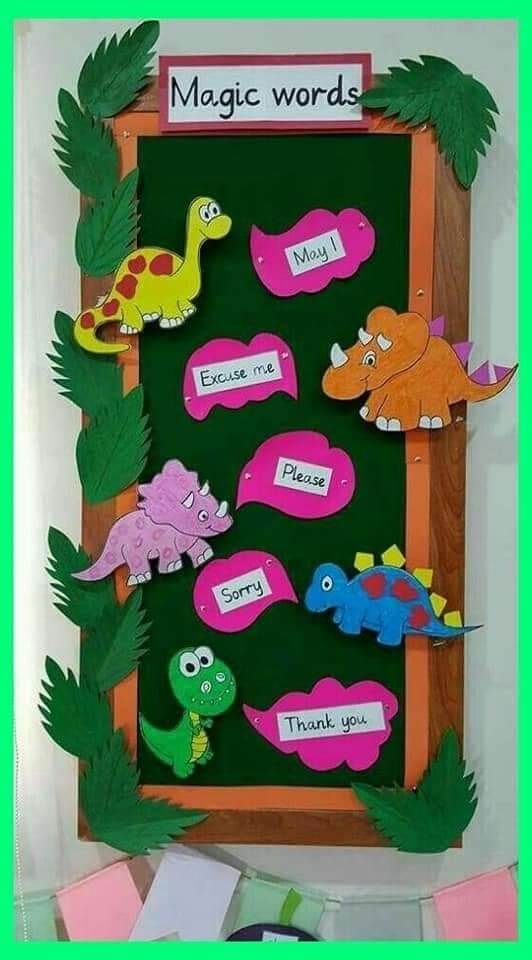
Image Source/Tutorial: Mungfali
It is essential to instill magical words into the speech of growing kids. This bulletin board decoration will help the kids to understand when to use polite language and the correct contexts for doing so. By utilizing these features within the classroom, teachers can craft an exciting and captivating learning atmosphere. These components can foster an atmosphere of imagination and cooperation, spurring students to communicate in a constructive and supportive manner. So, decorate the classroom to teach magical words!
Creative Classroom Door Decoration Craft For Kids Fun Activities
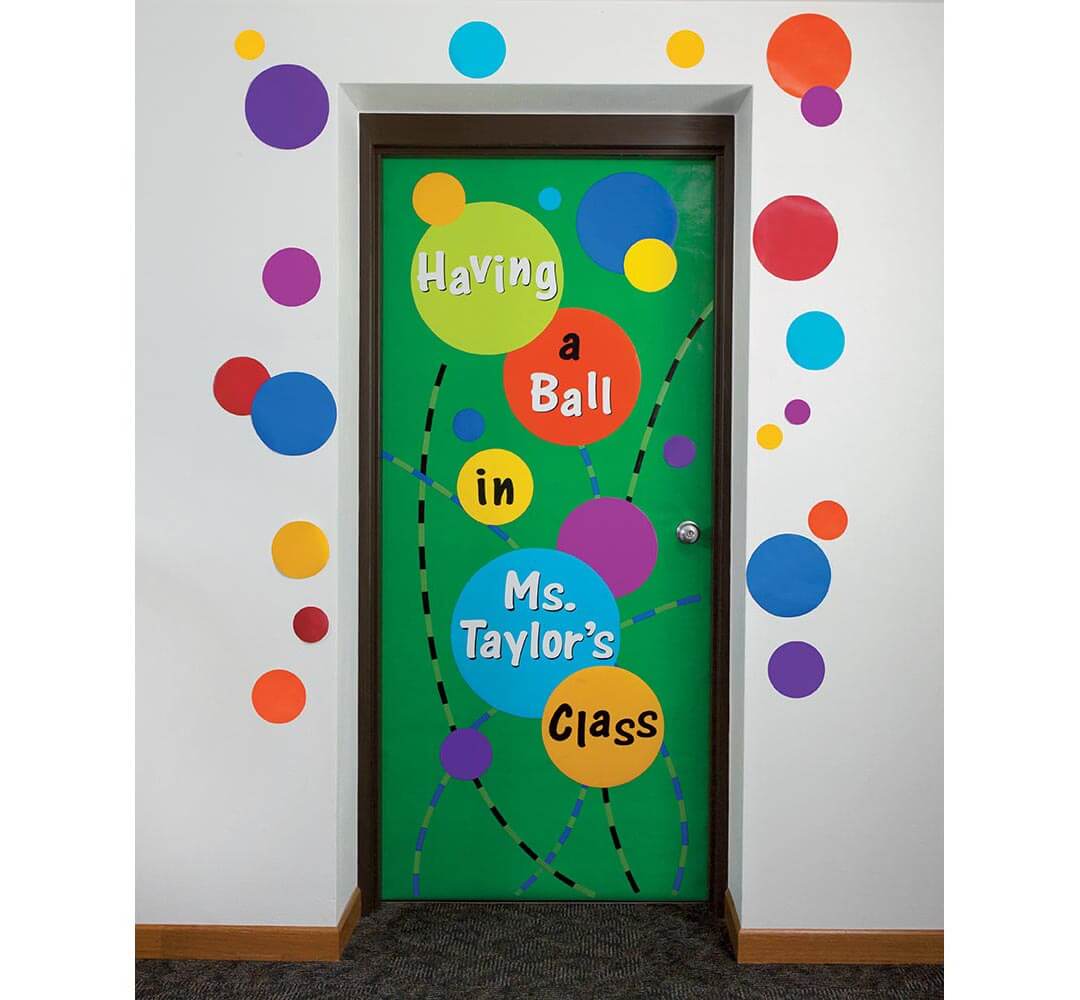
Image Source/Tutorial: Pacon
Kids are ready to walk through the gate of the classroom. Engagingly welcome your lovable kids by decorating the door of the classroom. It is a simple ball-themed door. Ms. Taylor is ready to welcome her students with this crafty and colorful door. It is easy to put up and provides a bright and cheerful atmosphere. It is sure to bring a smile to everyone’s face when they enter the classroom. It only requires paper and glue to make this beautiful door decoration. So, decorate the classroom’s door before kids come to school after summer vacation.
Read More: Clothespin Christmas Crafts For Christmas
Amazing Preschool Art Activities For Decorating Classroom Wall
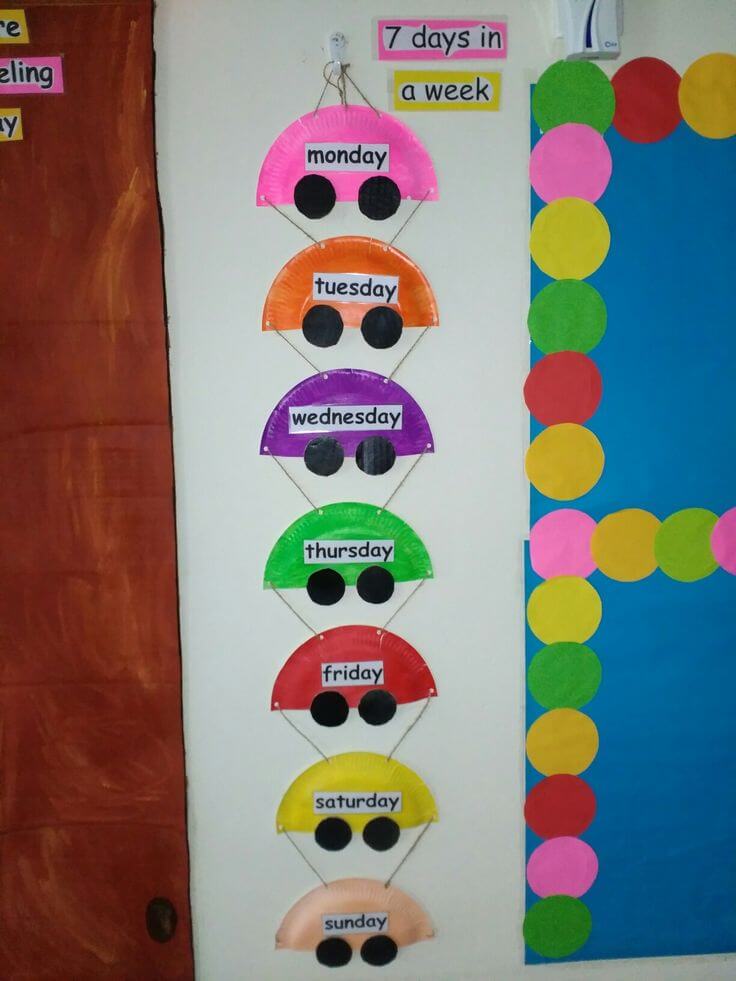
Image Source/Tutorial: Pinterest
Kindergarten classrooms can be transformed into vibrant learning spaces with this wall decoration. This creative idea will bring color and fun into the classroom, as well as help children learn the days of the week. This wall decoration requires – paper plates, papers, strings, and colors. This decoration can be used to help children learn and remember important information while adding some fun and color to the classroom. With these colorful crafts, kids can sense familiarity and comfort in the classroom. Fun and Learn!
DIY Amazing Kindergarten Classroom Decoration Ideas
Decorating kindergarten themed based is one of the important and typical tasks to do as a teacher. Kids’ environment decides their behavior and learning of kids. This decoration idea will bring life and energy to your learning environment. This decoration help to bring life and personality to the classroom. These include colorful wall art, unique seating arrangements, and creative storage solutions. Make learning inspiring and creative with this decoration that will create a positive environment in the classroom. Happy Classroom Makeover!
Creative Back To School Decoration Craft Ideas For School Board
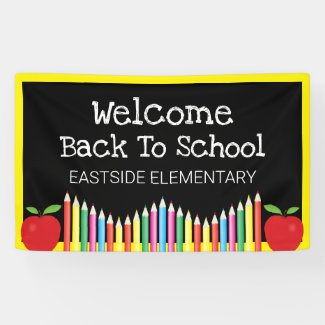
Image Source/Tutorial: Zazzle
As your little kiddos enter your classroom for the initial time, how will you greet them? This back-to-school classroom board decoration will enable kids to feel more inviting and engaging in the learning process. Kids will get more excited after seeing this board decoration in school. Whether you choose a chalkboard wall, a bulletin board, or a fun and colorful wall decal, your students are sure to love the new look. You can customize the design of the board or poster as per your preference and the theme of the classroom.
We sincerely hope that you found this list of cute and creative decorations for kindergarten classrooms to be helpful. We are working hard to come up with more content like this, so be sure to check back on Kids Art & Craft for more information. We would love to hear your feedback in the comments below, and if you enjoyed this article, please share it! Happy Crafting with Kids Art & Crafts!
FAQs Related To Classroom Decoration Ideas for Kindergarten
1. What is the easiest way to decorate a classroom?
The easiest way to decorate a classroom is to think about the basics first. Start by choosing a color scheme that is vibrant and fun and that will inspire creativity and learning. Then, add some bright and cheerful posters and artwork that are relevant to the subject being taught in the classroom. Finally, add some fun and colorful furniture, such as bean bag chairs or tables with cheerful designs, to create a welcoming and inviting atmosphere. With a few simple decorations, you can quickly and easily transform a classroom into a lively and inviting learning space.
2. What makes a good classroom wall display?
A good classroom wall display should be both visually appealing and informative. It should be composed of elements that are eye-catching but not too distracting, and the information should be relevant to the material being taught. Displays should be updated often to keep students engaged and to showcase recent accomplishments. Additionally, a good classroom wall display should be interactive to encourage students to participate and learn. This can be done by including elements that students can manipulate and move around to create their own unique display. By making the classroom wall display fun and educational, students will be more likely to stay engaged with the material and retain the information.
3. What can I use to hang things on a classroom wall?
When it comes to hanging things on a classroom wall, there are many options available. Push pins and thumbtacks are a popular choice, as they are easy to use and can hold most lightweight items such as posters and artwork. If you need to hang heavier items, adhesive strips, and hook-and-loop tape are good options. For heavier items, a few strategically placed nails or screws will do the trick. You can also use magnets to hang lightweight items, like notices and reminders. Finally, if you need to hang a long banner or other large items, you can use rope, string, or twine to attach the item to two wall hooks.
4. What should a kindergarten classroom have?
A kindergarten classroom should have a stimulating and engaging learning environment to foster growth and development. It should include different areas to explore, like a reading corner with cozy seating, a writing center with pencils, paper, and other writing materials, and a play area with manipulatives and toys. The classroom should also have comfortable seating and plenty of natural light to keep kids engaged. Additionally, it should have access to technology, such as computers and tablets, to introduce young learners to the digital world. Finally, the classroom should have books, posters, and decorations that appeal to young children to create a positive learning environment.
5. What are the 3 characteristics of a successful classroom?
A successful classroom is collaborative and encourages students to learn, grow, and succeed. Three key characteristics of a successful classroom include an organized and focused learning environment, a culture of respect and inclusion, and an engaging curriculum. An organized and focused learning environment allows all students to feel safe, secure, and comfortable while they learn. A culture of respect and inclusion allows all students to feel accepted and respected, regardless of their background, culture, or identity. Finally, an engaging curriculum ensures that students are exposed to a wide range of topics and have plenty of opportunities to learn and explore. These three characteristics are essential for a successful classroom.
6. What makes a happy classroom?
A happy classroom is one that is filled with laughter, smiles, and a sense of joy. A happy classroom is also one that encourages collaboration and problem-solving. It is a place where students feel comfortable and safe to take risks and express themselves. A happy classroom should also have teachers that are warm and welcoming, and that embrace diversity, recognize individual strengths, and foster a sense of community. A happy classroom is one in which students can grow and learn in an environment that fosters curiosity, creativity, and exploration.
7. What makes a perfect classroom?
A perfect classroom should have a balance between structure and flexibility. It should have a comfortable atmosphere that promotes learning. The classroom should be organized, with clear expectations and rules that are consistently enforced. A variety of teaching methods should be used to engage students, such as project-based learning, cooperative learning, and small-group activities. The classroom should also have resources available, such as computers and the internet, for students to use for research and projects. Additionally, the classroom should be a safe and inclusive environment for all students. All students should be respected and treated fairly, and all students should feel like they can contribute and be a part of the classroom. With these elements in place, a perfect classroom can be created.
8. What makes a positive classroom?
A positive classroom is one that is filled with a safe and respectful environment, where students are encouraged to be creative, take risks, and learn from their mistakes. It is important for teachers to foster an atmosphere of trust, collaboration, and mutual respect, in order to create a positive learning environment. A positive classroom should have a variety of learning strategies, materials, and activities, which are engaging and challenging for all students. Additionally, teachers should use positive reinforcement and provide students with meaningful feedback to support their learning. Ultimately, creating a positive classroom environment helps to ensure that students learn effectively and develop a lifelong love for learning.
Classroom decoration is an important part of creating a stimulating learning environment for kindergarteners. With the right decorations, you can truly make your classroom come to life and make learning fun for your little students.
Follow us on Youtube for art and craft tutorials and much more.
More Articles from Kids Art & Craft
- Outdoor Toy Storage Box Ideas
- Classroom Ideas For 2nd-Grade
- Classroom Ideas for 5th Grade
- Winter Olympic Activities for Classroom
- 3rd Grade Classroom Ideas for Kids


